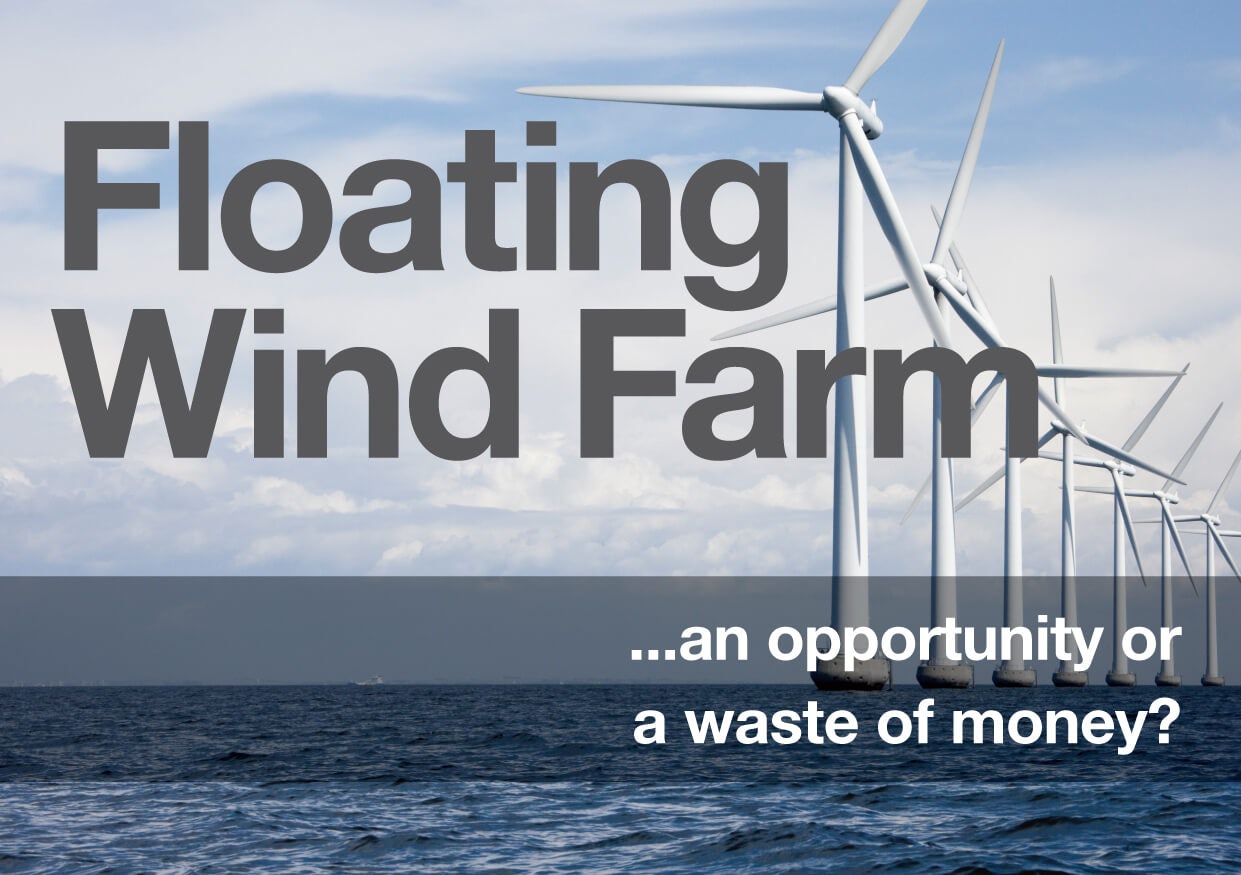The Floating Wind Farm – an opportunity or a waste of money ?
The concept of a floating wind farm has existed since the early 1970s but the first large-capacity, operational water-based wind turbine was not built until nearly 40 years later in 2009.
Hywind, as it is called, is situated in the North Sea and was installed by Statoil; it continues to be fully operational today. The second installation, Hywind 2, has just recently received permission by the Scottish government to be built offshore near Aberdeen.
With the wind speed being notably higher at sea than on land, and as the flow is steadier than the bursts commonly on land, open bodies of water are an attractive location for offshore wind farms. Arguably, it may also be easier to get planning permission for offshore wind farms and accommodate the authority-set requirements because there is less competition, fewer surrounding communities to consider and no concern of “visual pollution”, which is becoming an issue with land based energy production areas.
On the other hand, there is the argument that offshore wind farms are a waste of money. They are more at risk of being damaged than ground based alternatives because waves and rocky movements may overturn the turbine or damage it both externally and internally. Securing safe, steady turbines in water requires precise science and this garners a number of costs such as, the costs involved in the installation and production of the energy produced to the shore, where it will be consumed. is Due to these concerns, floating wind farms aren’t always considered a good investment.
However, with the building process set to start later this year for Hywind 2, and the planned green technologies located near Scotland (such as Abedeen Bay Wind Farm), the UK’s north could become Europe’s new renewable energy capital. With this in mind, the feasibility of the wind farm should be considered to the full extent.
Dashboard believes Hywind 2 looks promising and that once the first British floating wind farm proves a success, it will act as a gateway for more offshore wind farms in the southern parts of the country. We expect to see the commission of similar projects within the next ten years and are very excited about the steps green energy is taking in the UK.
